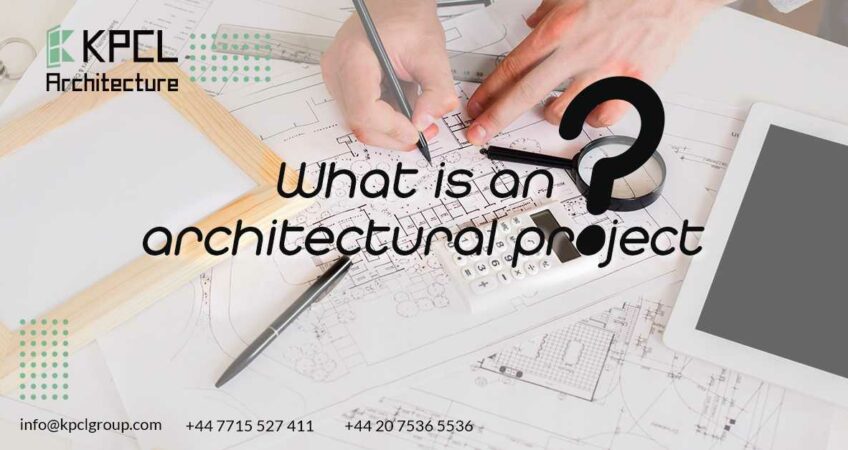# Architectural Project:
The architectural project that gives information about the plans. Planning drawing, exterior appearance, the proportion of the masses, interior designs, and all the details of the building to construct call architectural projects.
# What Is An Architecture:
For centuries, people have been in need of suitable structures for shelter, education, culture, health, administration, defense, shopping and to continue their religious activities. The art of making these structures useful, sturdy, and beautiful-looking call architecture. “Architect” is the person who designs and manages them.
Architecture developed according to the living conditions in different parts of the world, economic, technical, and cultural formations. In this respect, the structures, which can survive to the present day. provide important information about how people lived.
In the past and the civilizations, they have established their styles and building materials. Among famous various
Architecture firms in London, We inquired about the components of an architectural project.
In this blog post, we would like to enlighten you with this information. Let’s see! The architect starts work after the location of a building determines, the type decides and the cost is roughly calculated. The three most important principles of architecture are robustness, functionality, and beauty.
In this respect, the structures, which can survive to the present day. provide important information about how people lived. In the past and the civilizations, they have established with their styles and building materials.
The fact that the structure is suitable and sheltered for environmental and climatic conditions should consider at the design stage.
# Initial Reviews:
All the works that must consider before starting architectural projects call the first examination. If we write these into items: The architect makes the needs program considering the wishes and possibilities related to the project.
# Architecture, On-Site Review:
Checks the suitability of the plot to the diameter.
Checks the road network, sewerage, electricity, and related connections of the land.
Controls the north direction and landscape status of the plot.
Controls the trees, wells, pools, cisterns, etc. if any.
Examines the topographic situation.
Removes zoning status.
If the project presents any characteristics (such as factory, production farm, etc.). It receives the necessary information from the experts.
Examines climate conditions.
In light of these data, the architect develops a connection diagram using his professional knowledge and skills.
# Sketches:
This is the most important working period of the architectural project. These drawings and planning drawings are also called sketches. The rules to consider when preparing sketches are as follows:
Sketches draw approximately to the freehand squared and sketch papers.
Plan cross-sections and views draw according to the size of the building using 1 / 100-1 / 200 scale, and sitting plans using a 1 / 500-1 / 1000 scale.
Although the wall thickness is different, it draws as a single line.
The opinions of the knowers take.
Information exchange with engineers.
The surrounding architecture takes into consideration.
The life, customs, customs, traditions, and customs of the users will take into consideration.
The draft equipped with symbols such as people, animals, trees, and vehicles.
If necessary, the perspective draw and the model prepare.
# Pre-Project:
In this period, the project, which has matured with the sketches and found positive in all aspects, start with the tools. The preliminary project prepares by finding a suitable solution for a given subject according to the given program and land condition, and drawing the main ideas with a suitable scale (1 / 500,1 / 200,1 / 100) on the paper in the form of a floor plan, structure appearance, and section drawings and is a project given to the owner. The plans included in the final project given below:
Situation Plans
Sections
Views
Roof panels
# Final Project:
When the preliminary project hand over to the owner, the owner may like it or may not like it or request a change in it. Likewise, since the works related to the static and plumbing works, which are continuing in parallel with the architectural project works, become more definite as progress, some changes may see on the preliminary project due to these issues.
Problems solve in a way that satisfies all concerned. There will be no problem in the project that requires certainty and large changes. This project called “final project 1/ and it draws at a 1/50 scale or 1/100 scale according to the building size.
Plans to include in the final project are:
Site plans
Plans (floor plans)
Sections
Views
Roof plans
Suspended ceiling plan
Detail list
# Application Project:
The aim of all architectural and engineering project works; construction is to ensure that the desired structure is as intended. For this reason, a project draws to show all the details and details of the applications to make, and this project called the application project. The details and plans to include in the implementation project given below.
# Detail Drawings:
If the drawings in this section consisting of detail sections sketched before the plan, section, and views, which are the main drawings of the application project, can get more. The details in the list prepared during the final project period drawn using the scales specified in the same list.
In this period; roof details required for construction, staircase, joinery, flooring, wall and ceiling cladding; architectural details of paint whitewash, lighting, heating, ventilation, and air-conditioning devices; dilatation, fixed furniture, and plumbing projects. 1/10 or 1/20 scale.
Detail Drawings Drawn Under 8 Titles:
General system details
Partial detail systems
Roof details
Staircase details
Joinery details
Suspended ceiling details
Wallcovering and paneling details
Special manufacturing details related to the function of the structure
Paint and coating details
# Plans:
These are the drawings that created with specific scales and rules and which make up the parts of the project for the construction of the building. The plans drawn in the application project are also called floor plans. Although the floor plans draw on a scale of 1 / 50-1 / 100 considering the size or the size of the building, the most used scale is 1/50.
The floor plans draw in such a way to provide any ease to the practitioner during the application. All rooms and individual spaces numbered in the plans. On the plans, the areas of the individual sections, their dimensions, the type of coatings to make, the type of paints to make, the placement of the goods show.
Floor Plans are drawing under 6 names:
# Sections:
The main entrance is the upper floor code ± 0.00 and all different heights give and at least one of each block must pass through both stairs and low flooring and at least 2 vertical plans are drawing. It is drawing on a scale of 1/50 or 1/100 depending on the size of the project. When we look at the cross-section plans, we only see the necessary heights such as door height, under-window height, window height, in-room wall height.
# Elevations:
They are the plans drawn from different fronts with different drawing techniques according to their vertical planes. Views on the door, window, balcony, rain gutters, windowsill bottoms, shield walls, ridge, eaves, and chimneys coded by drawing. Also, facade cladding material and colors write, mobility on the facade state and if necessary, notes take.
(Next Post: A Simple Guide To Planning Permission)




